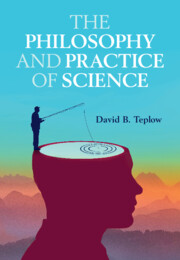Book contents
- Frontmatter
- Dedication
- Dedication
- Contents
- Foreword
- Foreword
- Preface
- Acknowledgments
- 1 Introduction
- 2 Defining Science
- 3 Learning Science
- 4 Development of the Scientific Method: From Papyrus to Petaflops
- 5 Science in Practice
- 6 Science as a Social Endeavor
- 7 Epilogue
- Appendix A: A Simple Question with Profound Implications
- Appendix B: Chaos in the Brickyard
- References
- Index
1 - Introduction
Published online by Cambridge University Press: 17 September 2023
- Frontmatter
- Dedication
- Dedication
- Contents
- Foreword
- Foreword
- Preface
- Acknowledgments
- 1 Introduction
- 2 Defining Science
- 3 Learning Science
- 4 Development of the Scientific Method: From Papyrus to Petaflops
- 5 Science in Practice
- 6 Science as a Social Endeavor
- 7 Epilogue
- Appendix A: A Simple Question with Profound Implications
- Appendix B: Chaos in the Brickyard
- References
- Index
Summary
The central message of the introduction is one must understand science if one wants to do science well. This requires a holistic educational approach, one that not only teaches the whats and hows of science, but most critically, it's whys. Why is the sky blue? Why do normal cells turn into cancer cells? Why do we use the scientific method and from where did it come? Why would one want to be a scientist in the first place? Why is science done in the way it is, that is, what is the gestalt of science? The whats and whys of science are practical in nature. The whys, in contrast, encompass theoretical, philosophical, historical, and social underpinnings of science. The whys are particularly important now when the probity and veracity of science are being attacked, and people seek to replace actual facts with "alternative facts" (falsehoods) for political, religious, or economic purposes or out of plain ignorance.
Keywords
- Type
- Chapter
- Information
- The Philosophy and Practice of Science , pp. 1 - 7Publisher: Cambridge University PressPrint publication year: 2023

